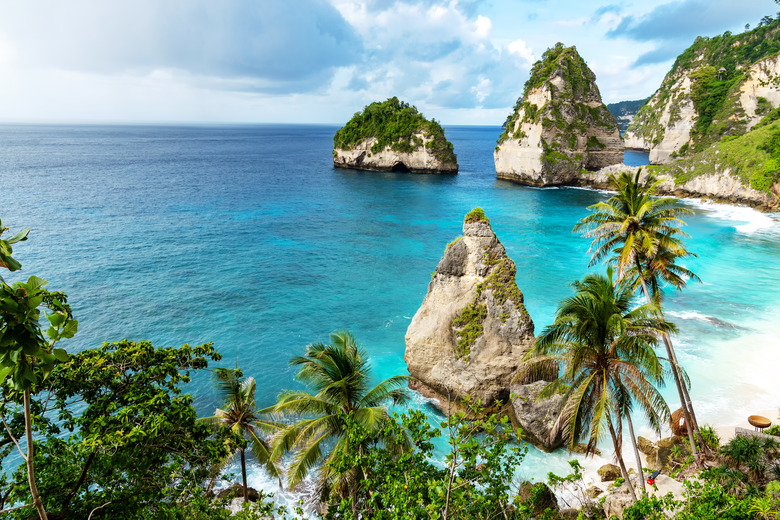Interactions In The Ecosystem
An ecosystem is defined by the interactions between the living and non-living things in any given area. These interactions result in a flow of energy that cycles from the abiotic environment and travels through living organisms via the food web.
This energy flow is ultimately transferred back to the abiotic environment when living organisms die and the cycle begins all over again.
Interactions Between Abiotic Factors
Interactions Between Abiotic Factors
_Abiotic factors_ are the non-living components of an ecosystem. These include:
- air
- water
- wind
- soil
- temperature
- sunlight
- chemistry
Abiotic factors interact with each other as much as the biotic, or living organisms, interact.
Interactions Between Abiotic and Biotic
Interactions Between Abiotic and Biotic
Living organisms adapt to their biotic environment to survive. Mammals in cold environments need thick fur to stay warm. Reptiles sit on hot rocks in the sunlight to warm their bodies. Animals such as termites, ants and rabbits dig burrows in the ground for shelter.
One of the most critical interactions in an ecosystem between the biotic and abiotic environment is **photosynthesis**, the base chemical reaction that drives most life on earth. Plants and algae use sunlight, water and carbon dioxide to create the energy they need to grow and live via photosynthesis. An important by-product of photosynthesis is oxygen, which animals need to breathe.
Plants and algae also absorb the essential vitamins and minerals they need to live from their environment. Animals eat plants and algae and absorb these vitamins and minerals. Predators eat other animals and obtain the energy and nutrients from them. This is how nutrients cycle from the abiotic environment through the biotic world.
Types of Organisms
Types of Organisms
Within an ecosystem, there are three different categories of organisms: producers, consumers and decomposers.
Producers are organisms such as plants and algae that create energy through photosynthesis. Consumers eat other organisms for their energy. Decomposers break down dead plants and animals and return nutrients to the soil.
Interactions Between Organisms
Interactions Between Organisms
There are four main types of species interactions that occur between organisms in an ecosystem:
- **Predation, parasitism and herbivory** – In these interactions, one organism benefits while the other is negatively affected. * **Competition** – Both organisms are negatively affected in some way due to their interactions. * **Commensalism** – One organism benefits while the other is neither harmed nor gains. * **Mutualism** – Both organisms benefit from their interactions.
Biotic Interaction Examples
Biotic Interaction Examples
Red fox (Vulpes vulpes) and hare (Lepus europaeus) interactions are an excellent example of **predator-prey dynamics**. The hares consume grasses, then the red foxes predate the hares. The grasses are negatively impacted by the hares while the hares benefit by getting a meal. Foxes then benefit by eating the hares.
Commensalism examples are more difficult as it is hard to prove whether the other animal benefits or is negatively impacted.
For example, Remora fish ride other fish and sharks and then eat their leftover food. The sharks and large fish are said not to be affected by the presence of the Remora as they ride them and then eat the leftover food. This interaction would be classed as competitive if Remora fought their hosts for food instead of waiting until they were finished.
Plants with bird or butterfly pollinators are good examples of mutualistic interactions. Plants benefit by having their flowers pollinated so they can reproduce. The butterflies and bird pollinators benefit as they get a delicious nectar meal.
References
- New Hampshire Public Television: Ecosystems
- The University of Michigan: The Concept of the Ecosystem
- Wildlife Biology: A Statistical Analysis of the Relationship Between Red Fox Vulpes Vulpes And its Prey Species (Grey Partridge Perdix Perdix, Brown Hare Lepus Europaeus and Rabbit Oryctolagus Cuniculus) in Western Germany From 1958 to 1998
- Encyclopaedia Britannica: Commensalism
- Encyclopaedia Britannica: Mutualism
Cite This Article
MLA
Jerrett, Adrianne. "Interactions In The Ecosystem" sciencing.com, https://www.sciencing.com/interactions-ecosystem-8255331/. 22 November 2019.
APA
Jerrett, Adrianne. (2019, November 22). Interactions In The Ecosystem. sciencing.com. Retrieved from https://www.sciencing.com/interactions-ecosystem-8255331/
Chicago
Jerrett, Adrianne. Interactions In The Ecosystem last modified August 30, 2022. https://www.sciencing.com/interactions-ecosystem-8255331/
